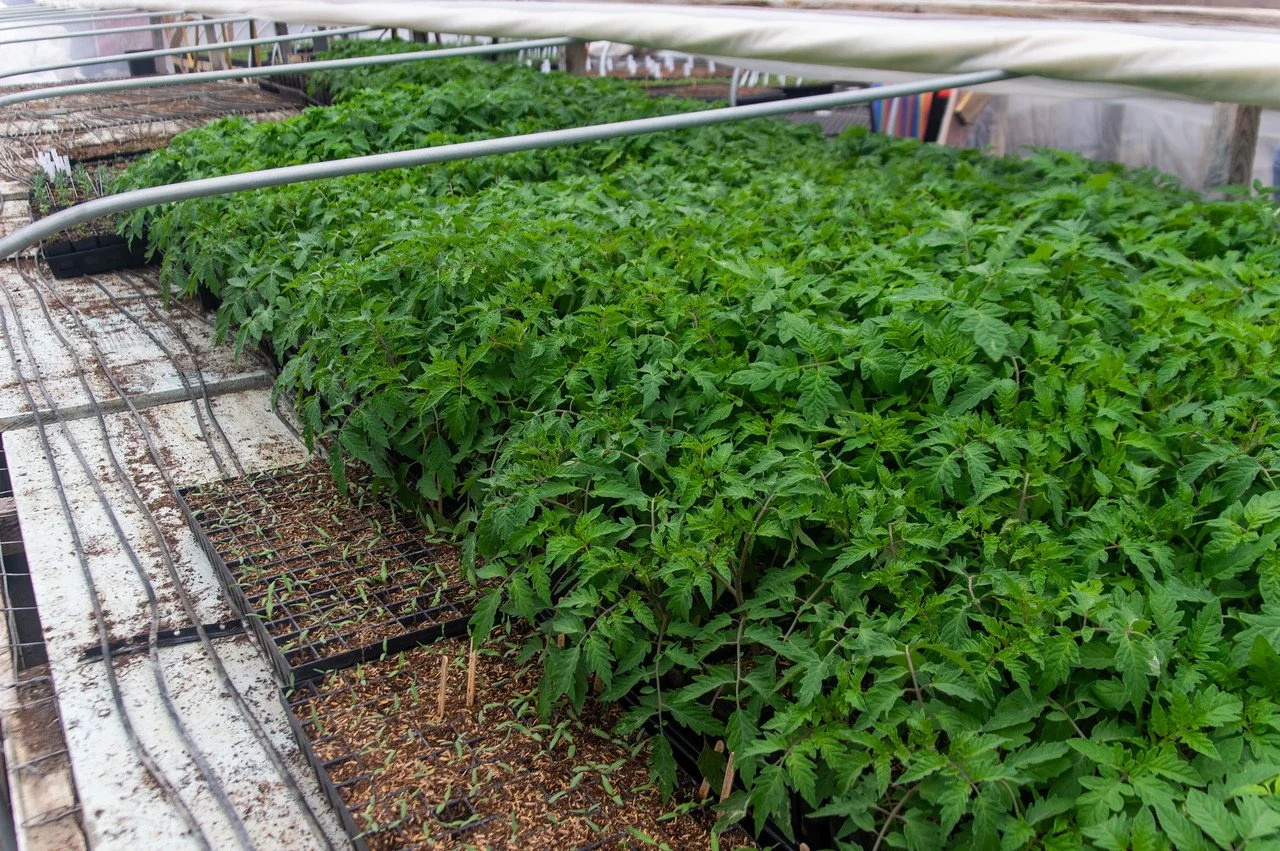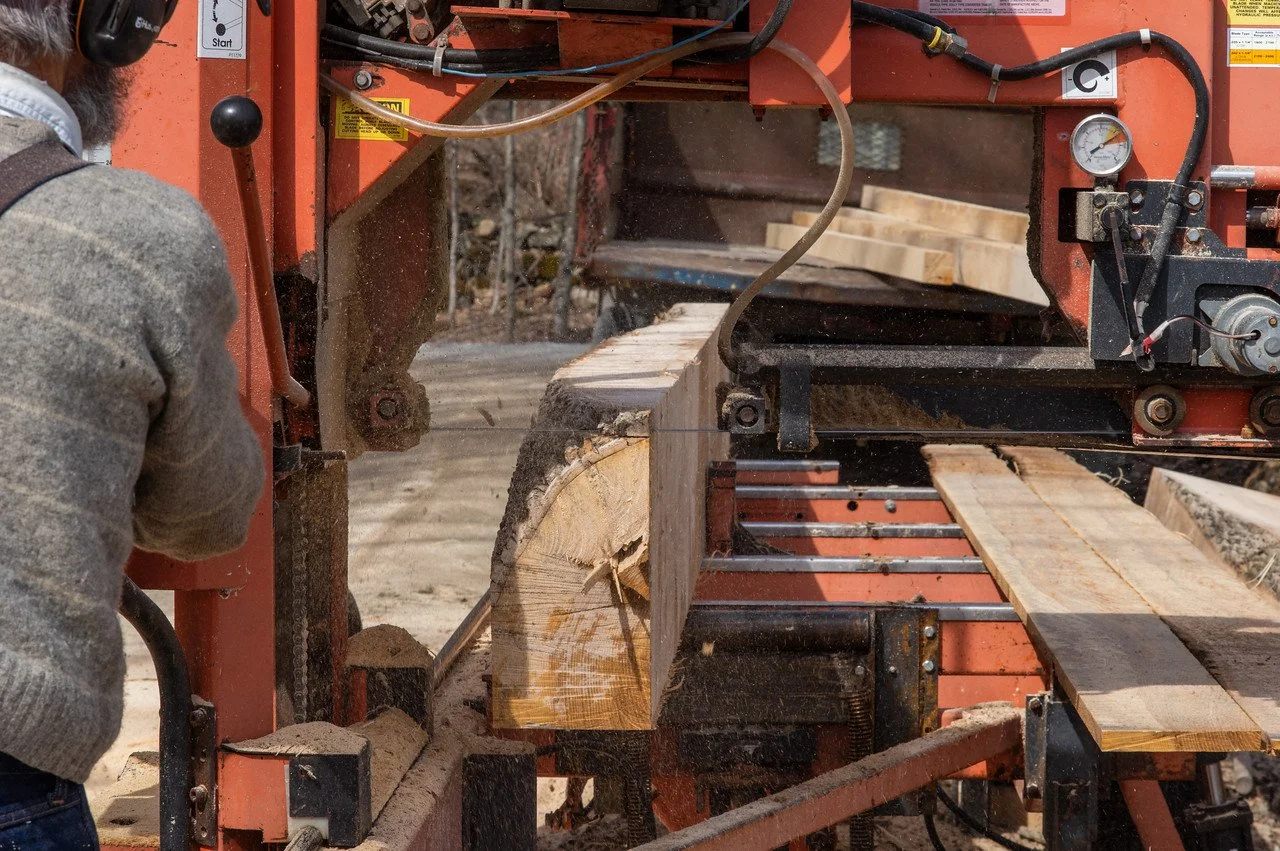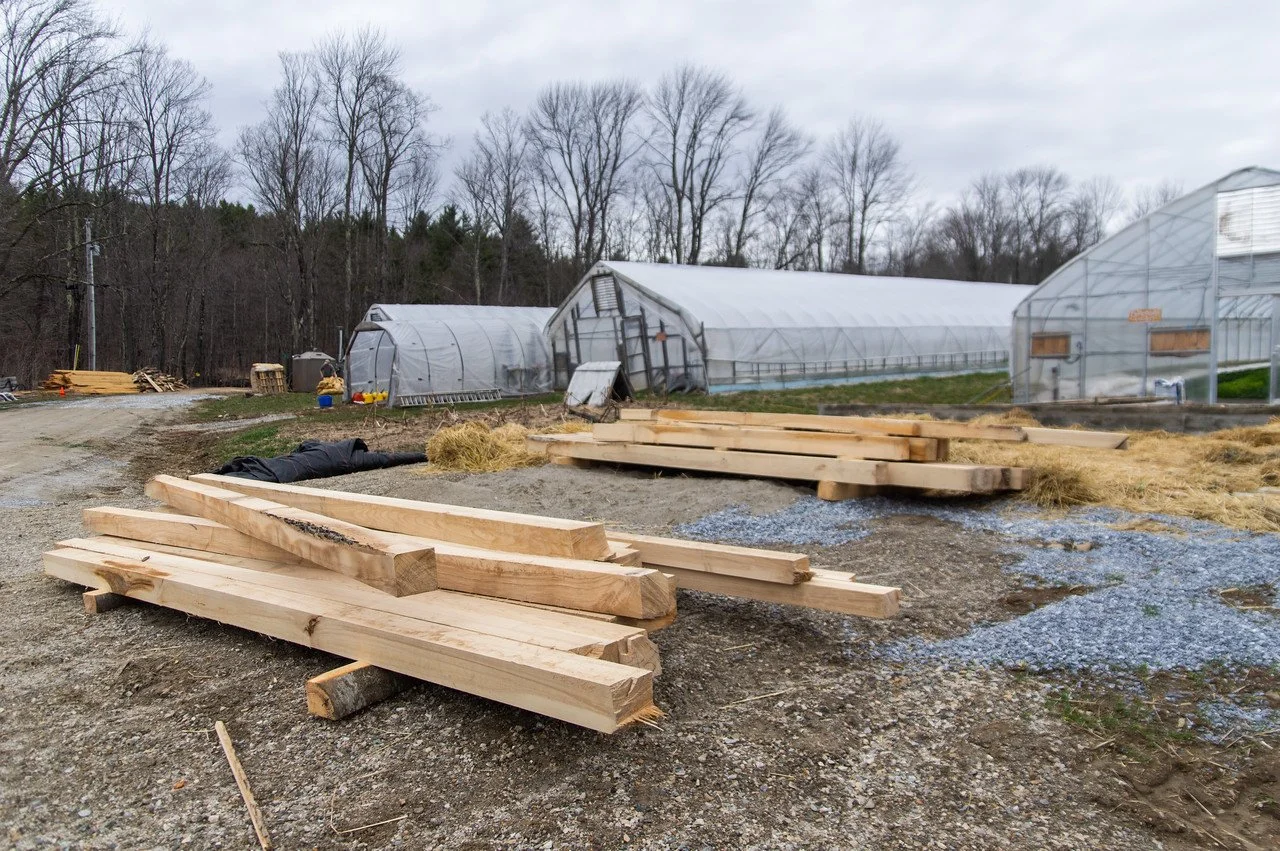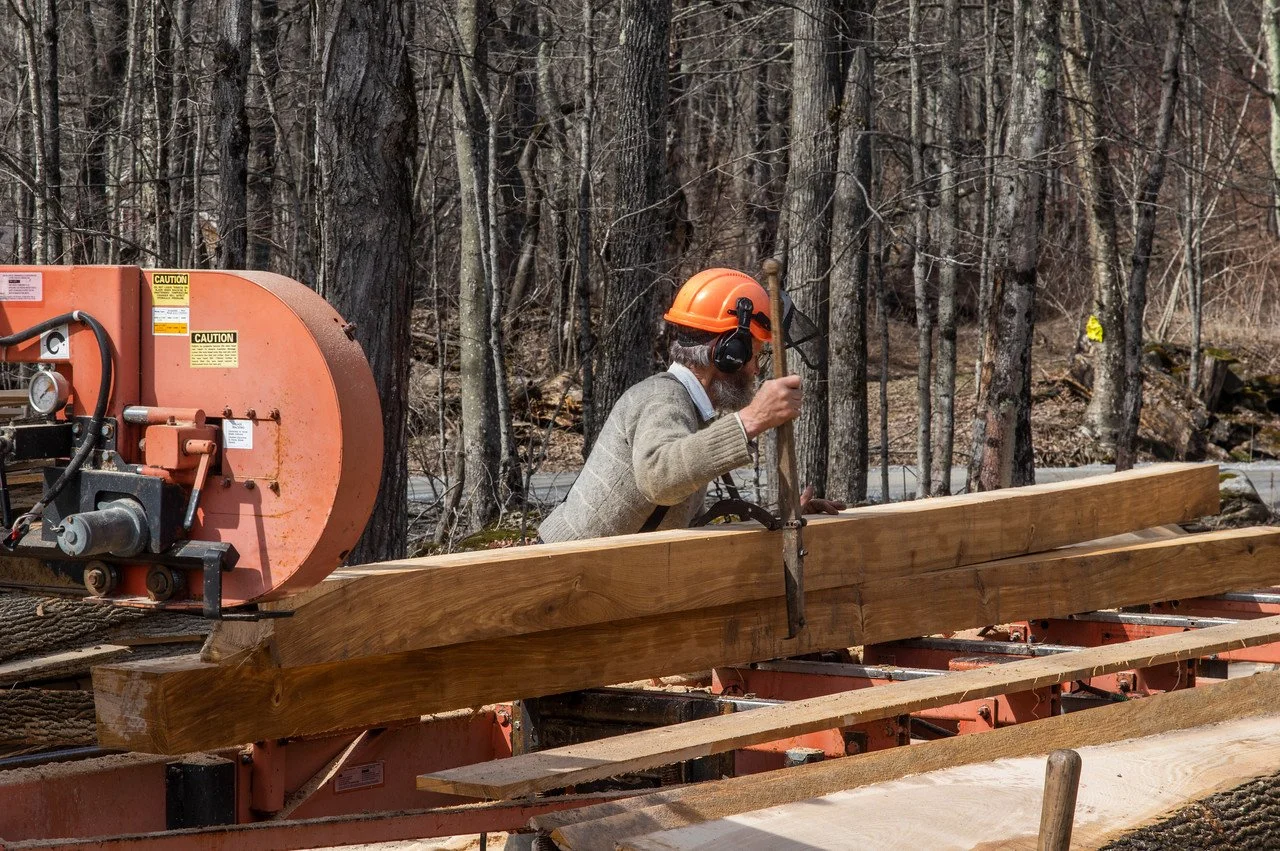10th Week of the Winter/Spring CSA season: Week of April 20th
Peppers and eggplant babies, photo by Adam Ford
This Week’s Availability
This week we will have red beets, watermelon radishes, orange carrots (Juniper Hill), rainbow carrots (Juniper Hill), sweet potatoes (Juniper Hill) shallots, red and yellow onions (Juniper Hill), garlic, red and yellow potatoes (Atlas Farm), spinach, mesclun mix, baby chard, green curly kale, pea shoots, flowering kale shoots*, claytonia, and frozen heirloom/beefsteak tomatoes.
*These are fun! They look similar to broccoli raab, and have similarly tender leaves, stems, and flowers. You can use the whole thing! (This veggie is truly divine and usually only available for a week or two. If you are curious about trying it, do it this week. We have been doing a quick and delicious sauté with it, at least once a day: chopped roughly with garlic, olive oil, lemon, and salt.)
Ordering closes at noon on Tuesdays for Wednesday bags, and at midnight on Wednesday for Friday bags.
You do not need to fill out the form if you plan to come to the barn on Wednesdays or Thursdays to pick out your items yourself.
Vanessa watering the prop house, photo by Adam Ford
long table of trays, photo by Adam Ford
Summer CSA Sign Up Available Now
We finally made the summer CSA season sign up live, and you can do that here, now. I will be honest, that I am not completely enjoying our new software system yet, but they have been working closely with us to continue to tweak things to work well for our particular CSA model, so we are going to give it one more shot for another season. Some functions are great, and I am staying optimistic that more can be improved. The reality is that Evening Song Farm provides a level of flexibility they have haven’t had to deal with, and it takes a lot of coding for them to tweak things to work for us. For now, I have a strong feeling that once you sign up for the summer season and have two seasons to your name on the platform, that their balance function may get even whackier and be super confusing, blending the two seasons together. If that happens and causes confusion, I can very easily see from my end of things how much is owed for each season separately, and what has been paid so far, so if you ever have questions, just reach out. I have also heard so far, that some folks who have signed up for the summer share are getting the spring season automatic response: I know about this glitch and they are working on it. The automatic response does populate the correct start date for the summer share, and we definitely still have you in the system for the spring share. (Oof, technology… definitely not my skill set. But we will get there, thanks for your patience as we wade through the adventures of new CSA software!)
the big tomatoes are just about ready to transplant, and the tiny ones to the left are seeded for plant sales in the spring! photo by Adam Ford
thyme, oregano, rosemary, lavendar, and sage all growing nicely for peoples’ future gardens, photo by Adam Ford
foreground is the second round of tomatoes to plant in the high tunnels, the background tomatoes will go out next week, photo by Adam Ford
onions, beets, bok choi, cilantro, and lettuce babies all waiting for their turn to be transplanted, photo by Adam Ford
Farm News
This week has been busy! We continue to repot rounds of tomato plantings. We also repotted all the peppers and eggplant for the farm as well. This year, we are finally going big on growing the one sweet pepper variety that we grow well, and really scaling back the varieties that flop… every. single. year. The good news is that the variety that grows reliably for us is our favorite sweet pepper: Carmen is super sweet and flavorful, and we truly can’t get enough of them.
We continue seeding, and the prop house is almost all full already! This is the first year that we have the additional 600 square feet of space from the extension we put on last year. I can’t believe we have gotten by for so many years without this extra space, but I certainly remember how crunchy things were.
The team has been transplanting new baby plants every day into the tunnel as we take out greens that have finished being harvested. Next week we will start clearing space to transplant the first round of tomatoes and cucumbers.
And our neighbor, Podge, finished using his saw mill to turn our logs into lumber. We have a few other prep steps to get ready to start the building, but later this spring, we will dive into that exciting project.
Well our optimism for the new batch of potting mix we received this year being good enough was misplaced, and the growth we are seeing in the plant experiments this week show that there are severe nutrient deficiencies with the new batch. Ryan has been working closely with the supplier, and smart folks at UVM extension to make sure we have this solved before we finish our old batch of potting mix and need to dive into the new stuff. He spent a significant amount of time this week setting up several detailed experiments with different levels and types of adjustments to the potting mix. We are hoping with the addition of different fertility sources, we might be able to dial in this new batch of mix, but we aren’t willing to try it on plants we need to rely on, so plenty more experimental trays are now growing seeds for us to make continued plans with this potting mix scenario. And we are lucky to still have enough of the old batch for the time being. (If you are just jumping into this particular story at this moment,here are the cliff notes: we have been using a great potting mix for about 4 years from an organic supplier who uses a coir-based mix, since peat is not a renewable resource. They changed their formula to use less coir since global supply chains are experiencing various and complicated stresses. It seems like this particular batch of their new formula got mixed incorrectly without key sources of nutrients for plant growth. Now we have a project of turning two years worth of potting media into a substrate that will grow plants well.)
Here’s one of my favorite parks of the week: We got to write a letter of support for a great SARE (Sustainable Agriculture Research and Education) grant that extension folks at UVM are pursuing, regarding plastic packaging overhaul for farms. Years ago we started writing a climate action plan for this farm. It addresses all the ways this farm participates in climate break down, as well as all the opportunities and ways the farm is pursuing solutions. The purpose of articulating solutions is to perhaps augment and build on certain efforts that are in the right direction, and connect and share ideas with other farms so the impact is bigger than this small place. And the purpose of articulating the problems, is to start addressing solutions. One aspect that we work towards is reducing plastic waste. Farms consume plastic in many ways. For example, we use flexible plastic lay flat tubing for some of the irrigation we do in the high tunnels, and that stuff doesn’t last many seasons. But the most visible (to our customers) way we consume plastic is with our greens packaging. The amount of plastic bagging we do has always made me a bit queasy. I personally adjust my own buying habits based on packaging, and I know many of you have shared with us your desire to avoid plastic packaging, too. Before the pandemic, we sampled at least half a dozen other options, and I researched everything I could find… spoke on the phone with many packaging companies, and even directly with a materials production company to discuss the timeline for using algae to create plastic bags. (That’s several years out, but it IS being worked on!) It’s wild to me that there aren’t good alternatives that I have found yet. (It’s 2022, and scientists have identified microplastics human blood…. it’s probably past time to wean off the plastic packaging….) The bags we sampled, all didn’t work for different reasons, mostly related to how much more quickly greens degrade in a biodegradable bag. It would be an epically long ramble to describe all the different types of exploration we have done on this topic, but to cut to the chase, back then I was surprised that our tiny little farm was doing this research ourselves. Surely this is a problem all farms are grappling with. More importantly, aren’t there larger organizations who are thinking and working on this? The answer is yes, and now some UVM extension researchers are accessing a SARE grant to essentially do a better, more thorough job of what I was trying to do late at night or while I was breastfeeding babies. I cannot wait to see what solutions to plastic packaging the grant unearths. And I look forward to the day that I don’t cringe when we bag up all these wonderful greens to go in the myriad directions we send them.
Have a great week,
-ESF Team: Kara, Ryan, Molly, Cindy, Taylor, Vanessa, Katie, and Galen
Vanessa, Taylor, Katie, and Molly wrapping up for the day, photo by Adam Ford
Vanessa prepping a bed for pea shoots, photo by Adam Ford
Vanessa seeding a section of pea shoots, photo by Adam Ford
Molly harvesting a different round of pea shoots, photo by Adam Ford
transplanted lettuce, photo by Adam Ford
Cindy and Ryan fixing the pellet boiler in preparation for transplanting tomatoes and cucumbers next week, photo by Adam Ford
big log getting its first cut, photo by Adam Ford
From this log Podge cut out two thick slabs that may eventually become our kitchen countertop, photo by Adam Ford
photo by Adam Ford
photo by Adam Ford
photo by Adam Ford
photo by Adam Ford
stacks of beams, photo by Adam Ford
biker dude, photo by Adam Ford
flowering tokyo bekana waiting to be removed for transplants, Adam Ford
Callie and Echo happy to chill out, photo by Adam Ford
these two are always fixing something…. in this moment it’s the tractor joystick, which prevented the loader from lowering, photo by Adam Ford
turning the log to cut other sides, photo by Adam Ford
To get the 6”x6” posts and beams we need for the new building, we ended up with a good deal of 1” thick boards as well, photo by Adam Ford
photo by Adam Ford
photo by Adam Ford
photo by Adam Ford
photo by Adam Ford
stickered boards, photo by Adam Ford
happy dog, photo by Adam Ford
































